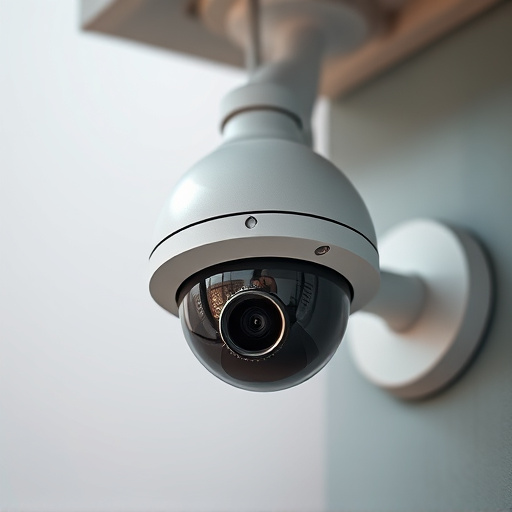Dummy surveillance cameras, strategically placed according to a comprehensive positioning guide, effectively deter criminal activity by simulating enhanced security. By understanding target areas' unique characteristics and integrating visible, authentic placements with proper lighting, these fake cameras maximize their deterrent impact. Following the guide ensures discreet yet realistic mounting in corners, ceilings, or near windows/doors, mimicking actual surveillance systems while blending into the environment. This blend of realism and strategic placement significantly enhances real security measures, making them a valuable tool for homeowners and businesses alike.
“Enhance your home or business security with our comprehensive Dummy Surveillance Deterrent Positioning Guide. Discover how understanding dummy security cameras and their strategic placement can significantly boost deterrence. Learn key factors, best practices, and common mistakes to avoid for effective, discreet camera positioning. Implement these insights for a robust, realistic security setup that safeguards against potential threats.”
- Understanding Dummy Security Cameras and Their Role in Deterrence
- Key Factors to Consider for Effective Placement Strategy
- Best Practices for Discreet and Realistic Dummy Camera Positioning
- Common Mistakes to Avoid When Setting Up Fake Surveillance Devices
Understanding Dummy Security Cameras and Their Role in Deterrence
Dummy surveillance cameras, often referred to as fake or mock security cameras, play a crucial role in a comprehensive security strategy. They serve as an effective deterrent for potential intruders, acting as a powerful visual reminder that a property is under surveillance. By strategically placing these dummy cameras, homeowners and business owners can create the illusion of enhanced security, even without actual active monitoring.
This guide to dummy surveillance deterrent positioning highlights the importance of realistic mockups in deterring criminal activity. When placed in prominent, visible areas, these fake cameras send a clear message to would-be criminals, discouraging them from targeting the property. Understanding how and where to deploy these deterrents can significantly contribute to creating an environment that promotes safety and security without relying solely on active surveillance systems.
Key Factors to Consider for Effective Placement Strategy
When developing a dummy surveillance deterrent positioning guide, several key factors must be considered to ensure maximum effectiveness. The first is understanding the target area and its behaviors. Different environments—whether residential, commercial, or industrial—require tailored strategies. For instance, a bustling city center will necessitate different deterrent measures than a quiet suburban neighborhood.
Additionally, visibility and line of sight are crucial. Strategically placing dummy cameras where they are clearly visible can significantly deter potential criminals. Lighting is another critical aspect; well-lit areas are less appealing for illegal activities. Integrating these factors with the right dummy surveillance products can create an intimidating yet realistic security system, serving as a powerful deterrent.
Best Practices for Discreet and Realistic Dummy Camera Positioning
When implementing a dummy security camera placement strategy, discretion is key. Place fake cameras in areas that resemble genuine security equipment mounting locations – like corners, ceilings, or near windows and doors. Avoid obvious spots where potential intruders might quickly spot them. A realistic Dummy Surveillance Deterrent Positioning Guide suggests mimicking the patterns and density of actual security systems to create an authentic appearance.
Consider both visible and less-obvious placement options. Mounting fake cameras on walls, fences, or outdoor structures can deter entry attempts while blending in with the environment. Additionally, strategically placing them near valuable assets or potential points of access sends a clear message that your property is under surveillance, even if the cameras themselves are not real.
Common Mistakes to Avoid When Setting Up Fake Surveillance Devices
Setting up fake security cameras, or dummy deterrents, can be an effective way to enhance real surveillance systems and deter potential criminals. However, improper placement can render them useless. Common mistakes include placing them in plain sight without camouflage, ignoring local laws regarding visible security measures, and failing to consider the camera’s field of view. For optimal results, integrate these devices seamlessly into the environment, ensuring they offer a realistic representation of active surveillance.
Avoid common pitfalls by treating dummy cameras as you would genuine ones, considering factors like lighting conditions, angle, and distance from potential targets. Remember, the goal is to create an illusion of constant observation, not just a single point of presence. A well-designed Dummy Surveillance Deterrent Positioning Guide can help property owners and security professionals make informed decisions, ultimately strengthening overall security measures.
A well-executed dummy security camera placement strategy, as detailed in this guide, can significantly enhance real surveillance capabilities while also acting as a powerful deterrent. By understanding the role of dummy cameras, considering key factors like environment and potential threats, adhering to best practices for positioning, and steering clear of common mistakes, property owners and businesses can maximize both the realism and effectiveness of their security measures. Implement these strategies to create an integrated deterrent system that safeguards against potential risks with precision and subtlety.
